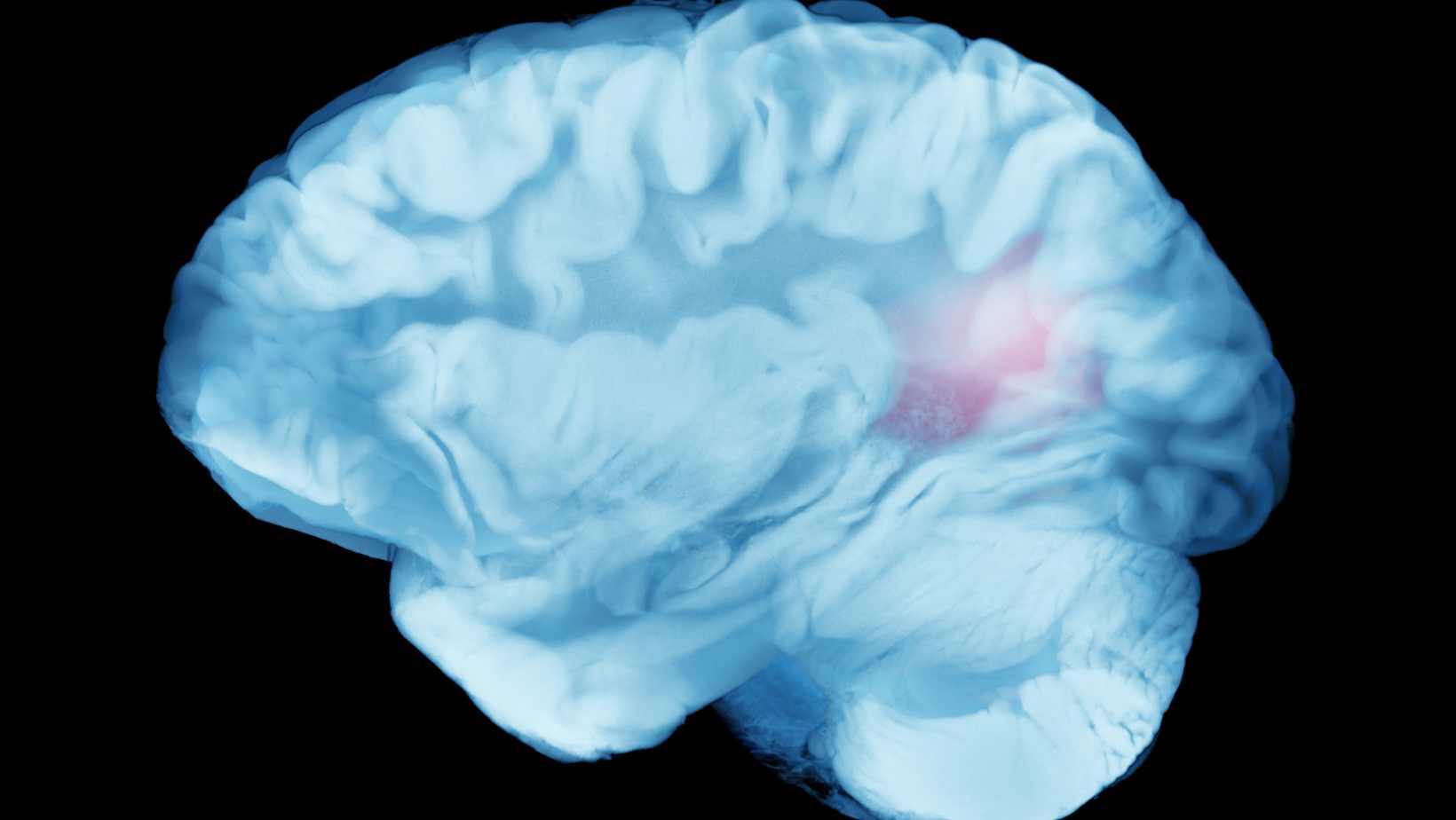Ever wondered why people with mood swings can go from super energetic to deeply sad without warning?
That could be more than just emotions at play. The real cause often lies deep inside the brain — where your nervous system controls everything from emotions to thoughts. Understanding how the nervous system works is the key to understanding bipolar disorder.
In this blog, we will explain how the nervous system influences bipolar disorder, what brain changes take place, and how science is helping treat it. Let’s make it super easy to understand, even if you’ve never read about this before.
Table of Contents
ToggleWhat is Bipolar Disorder?
Bipolar disorder is a brain-based disorder with many clinical manifestations and comorbidities, leading to severe disabilities in the patient. Mixed episodes characterize this condition, i.e. its symptoms swing between mania and depression. It is important to note that while depression has commonly been associated with the disorder, a bipolar diagnosis need not necessarily include depressive episodes, though it can.
Bipolar disorder is a complex medical state whose etiology involves genetic and epigenetic factors acting alongside environmental components in causing manifestation of the disease. Bipolar disorder affects virtually all areas of the human body, from energy levels and appetite to muscles and even libido.
Who It Affects?
- Around 40 to 50 million people across the world have bipolar disorder.
- It usually begins between ages 15 and 30.
- Men and women are affected equally.
It is one of the leading causes of disability among young people worldwide.
Types of Bipolar Disorder
There are several types of bipolar disorder. Each type affects the brain and behavior differently:
- Bipolar I: Severe mood swings. Periods of mania can last at least 7 days or need hospital care.
- Bipolar II: Less intense highs (called hypomania) and deep depression.
- Cyclothymic Disorder: Many mood changes over time, but less severe than Bipolar I or II.
Each of these types shows different patterns in brain activity.
Early Symptoms to Watch Out For
Recognizing symptoms early can help in getting treatment.
- Sudden mood changes without a clear reason
- Talking fast or being easily distracted
- Sleeping too much or too little
- Risky behaviors or poor judgment
Stat Box: 1 in 5 people with bipolar disorder attempt suicide — National Institute of Mental Health (NIMH)
Pathophysiology of bipolar disorder
The behavioral and physiological manifestations of Bipolar disorder are complex, showing itself not only as profound changes in mood, but also in the form of a range of neurovegetative and psychomotor features.
The pathophysiology is undoubtedly moderated by interconnected limbic, striatal and fronto-cortical neurotransmitter neuronal circuits, and the interacting cholinergic, catecholaminergic and serotonergic neurotransmitter systems thus represent very attractive candidates.
Thus, it’s not surprising that clinical studies over the past 40 years have for the foremost part rested upon the conceptual foundation that monoamine signaling and hypothalamic-pituitary-adrenal (HPA) axis disruption are integral to the pathophysiology of both depression and mania .
A true understanding of the pathophysiology of manic depression must address its neurobiology at different physiological levels, i.e. molecular, cellular, systems, and behavioral.
Abnormalities in organic phenomenon undoubtedly underlie the neurobiology of the disorder at the molecular level and this may become evident as we identify the susceptibility and protective genes for Bipolar disorder in the coming years.
Hippocampus and bipolar disorder
Interest in hippocampal volume stems from neuropsychological and neuropathological studies that implicate this structure within the pathophysiology of bipolar disorders. For instance, enlarged right hippocampal volume is claimed to be related to poor neuropsychological functioning in manic depression , and findings from a neuropathological study have indicated a discount and dysgenesis of varied neuronal cell lines in entorhinal and hippocampal cortex of bipolar patients.
Also, in people with bipolar disorder, certain parts of the hippocampus are smaller than they are in both people with major depressive disorder and in people without mood disorders.
Which hormone causes bipolar disorder?
Neurotransmitters aren’t the only chemical messengers within the body. Hormones are also used by the body as chemical messengers. The thyroid is an endocrine organ located within the neck that produces hormones. It has been the main target of much mood disorder research.
Depression is usually related to low levels of hormones, a condition referred to as Hypothyroidism. Mood elevation is usually related to high levels of hormones (Hyperthyroidism). Treating hypothyroidism by supplementing or replacing hormones may sometimes alleviate depression.
Similarly, reducing levels of high hormones with lithium may ease manic symptoms. Given that up to half of patients with a rapid-cycling sort of bipolar disease even have hypothyroidism, the involvement of the thyroid in producing or enabling bipolar disorders for some patients is a strong possibility.
What Happens in the Brain During Bipolar Disorder?
Brain Imaging Studies
Modern brain scans have shown clear changes in people with bipolar disorder:
- fMRI shows high activity in the amygdala during manic episodes
- PET scans show low activity in the prefrontal cortex during depressive episodes
These patterns are now helping doctors study brain function in bipolar disorder more closely.
Chemical Imbalances That Trigger Mood Episodes
Mood swings happen when the brain’s chemistry goes off balance:
- Dopamine and serotonin in bipolar patients shift drastically
- The HPA axis (stress control system) does not function well
These imbalances are a core neurological cause of bipolar disorder.
Structural Brain Changes in Bipolar Disorder
Research shows that the brains of bipolar patients are physically different.
Table: Brain Area Changes in Bipolar Patients vs. Healthy Controls
| Brain Area | Change in Bipolar Patients |
|---|---|
| Prefrontal Cortex | Reduced volume |
| Amygdala | Increased activity |
| Hippocampus | Smaller in size |
| Gray Matter Overall | Loss in some brain regions |
These physical changes affect how moods are controlled in the brain.
The Nervous System’s Role in Bipolar Mood Swings
Mania and Nervous System Overstimulation
During mania, the nervous system goes into overdrive:
- Racing thoughts and nonstop talking
- High energy and restlessness
- Poor sleep and risky choices
This shows high activation of the sympathetic nervous system, part of the body’s stress system.
Depression and Nervous System Slowdown
Depressive episodes are the opposite of mania:
- Constant tiredness
- Slower thinking and speaking
- Sleeping too much or too little
Here, the parasympathetic system dominates, creating low-energy states in the body.
Can Nervous System Disorders Mimic Bipolar Disorder?
Yes. Some brain conditions may show similar signs:
- Multiple Sclerosis (MS): Mood shifts due to brain inflammation
- Stroke: Changes in mood or behavior after brain damage
- Parkinson’s Disease: Emotional changes linked to nerve loss
This makes correct diagnosis critical. Doctors need to rule out other nervous system diseases before confirming bipolar disorder.
Can the Nervous System Heal? Long-Term Outlook for Bipolar Disorder
Yes, the brain can improve with care. This is thanks to brain plasticity, or the brain’s ability to repair itself.
- Early treatment = better outcomes
- Lifestyle changes improve nerve health
- Therapy strengthens emotional control
Recovery takes time, but it is possible.
Why Seeing a Neurologist Matters: Book Your Consultation with Dr. Chandril Chugh
If you or someone you know is facing mood changes that are extreme or confusing, don’t wait. Bipolar disorder is not just a phase. It’s a brain condition that needs expert care.
Dr. Chandril Chugh is a US-trained, board-certified neurologist with deep experience in treating complex brain disorders. From brain scans to modern treatments, he brings clarity to complicated conditions like bipolar disorder.
Whether it’s managing bipolar disorder mood swings, understanding your brain function, or exploring options like neuromodulation therapies, Dr. Chugh offers reliable, caring, and research-backed support.
Book your consultation with Dr. Chandril Chugh now.
Your brain health matters, and you’re not alone.
Also Read
- Tips To Manage Migraines During The COVID-19 Pandemic
- What Is Parkinson Disease?
- Sleep Strategies For Complex PTSD
FAQs
Can bipolar disorder damage your nervous system?
Yes, long-term untreated episodes may affect how nerves in the brain function. Repeated mood swings increase stress on the brain, which can impact its chemical balance and structure. These changes can make symptoms worse over time. Early diagnosis and consistent care help reduce the risk.
Is bipolar disorder a neurological or psychological condition?
Bipolar disorder is both neurological and psychological. The condition begins with changes in brain function and chemical balance (neurological). These changes then affect thoughts, emotions, and behaviors (psychological), so both areas need attention during treatment.
What part of the brain is responsible for bipolar disorder?
The key brain areas involved are the amygdala, hippocampus, and prefrontal cortex. These are parts of the limbic system, which helps control emotions and decision-making. Irregular activity in these regions can lead to unstable mood patterns.
How does the nervous system affect mood swings?
Mood swings are closely linked to how the nervous system regulates brain activity. During mania, nerve signals move faster, causing hyperactivity. During depression, they slow down. These changes in signal speed create the extreme highs and lows seen in bipolar disorder.
Can brain scans detect bipolar disorder?
Brain scans like MRI and PET can show changes linked to bipolar disorder, such as differences in brain activity or size. However, scans alone are not enough for diagnosis. Doctors also consider symptoms, medical history, and psychological evaluations.
What neurotransmitters are involved in bipolar disorder?
Three main brain chemicals are involved: dopamine, serotonin, and norepinephrine. These neurotransmitters influence energy, mood, and focus. When their levels are off balance, a person may experience mood shifts linked to bipolar disorder.
Is bipolar disorder caused by brain chemical imbalances?
Yes, chemical imbalance in the brain is a primary cause. When neurotransmitter levels change too much, they disrupt mood stability. This imbalance can be triggered by stress, genetics, or other brain changes.

Dr Chandril Chugh
Dr. Chandril Chugh, a renowned American Board-Certified Neurologist, is just a click away. With years of global experience, he offers trusted neurological guidance online.
→ Book a consultation to discover which remedies suit your needs best.




